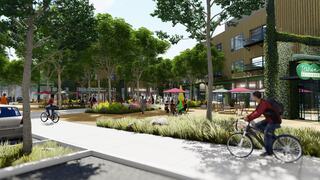Balancing Progress and Cost: The Challenge of Specific Plans in Urban Development
For the most part, city planners, urban designers, developers, and neighborhood residents can agree on one thing: everyone prefers neighborhoods designed with people and placemaking in mind.
Features that encourage walking and riding bicycles, ample green spaces, and consideration of the overall user experience are top of mind for city planners, urban designers, and developers. They understand that creating vibrant, sustainable communities begins with a focus on these elements, so they emphasize the importance of planning at the neighborhood and district level.

Unfortunately, city planners are often in the position of needing to create Specific and Precise Plans without understanding the full picture of how those plans impact development. Though developers and planners have the common goal of creating functional, people-centered neighborhoods, these roles bring different experiences and values to the process. If planners fully understood how the requirements and guidelines in Specific and Precise Plans impact development, they would be better able to define requirements that support and facilitate development, and the ultimate creation of human-centered neighborhoods.
Flexibility With Architectural Expression
Several strategies typically required by specific plans impact development budgets more than others and have few long-term benefits to placemaking. If placemaking elements are concentrated where people interact with buildings, i.e., the lower 40-feet of buildings, developers can invest in other features, like refined finishes and higher window/wall ratios, that contribute to placemaking.
A development guideline typically outlined in specific plans is the requirement for upper-floor step-backs. The requirement is well-intentioned – to reduce the perceived height of buildings and allow more light to reach the street – but it has significant cost implications that are then passed along to the end users.
Planners often laude European cities for pedestrian friendliness, but most of those cities couldn't be built using today’s specific plans because the buildings would be too close together, don't have upper floor step-backs, streets and sidewalks are too narrow, or there’s little space for parking.

There are a number of reasons why we can't achieve this idyllic European human-centered streetscape here in the US, but smart planning can get us closer.
Furthermore, the same guidelines and requirements listed in Specific and Precise Plans are repeated document to document, city to city without consideration for construction cost or the uniqueness of a given location.
Let's focus on what matters: encouraging pedestrian-scaled placemaking and reducing requirements that increase cost with little long-term benefits. By emphasizing human-centric values, city planners, urban designers, and developers can prioritize the user experience, fostering the creation of neighborhoods that are not only conducive to the well-being of residents but also environmentally sustainable.


